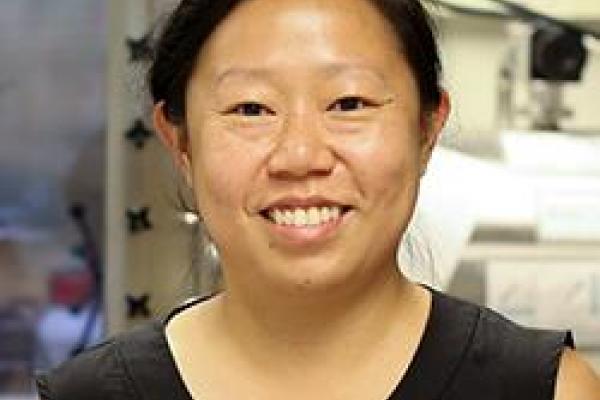STEAM Member Anne Co wins an NSF CAREER Award for "Control of surface reactivity for catalyzing hydrocarbon formation from CO₂"

Article from the College of Arts and Sciences (http://artsandsciences.osu.edu)
Anne Co’s new, five-year $651,729 NSF CAREER Award for “Control of surface reactivity for catalyzing hydrocarbon formation from CO₂," will allow her to expand her research on advanced electrocatalytic materials for chemical conversion and energy storage.
Co, assistant professor, chemistry and biochemistry; and her students, focus on fundamental studies of electrochemical reactions and electrocatalyst function.
They investigate novel nanoporous electrode materials and single atomic layer model systems for the catalysis of oxygen to water, alcohols to carbon dioxide and carbon dioxide to hydrocarbons.
Ultimately, this will facilitate design of new materials for improving efficiency of electrical conversion and storage devices, such as fuel cells and batteries.
“By using multidisciplinary approaches that combine electrochemical, analytical, materials and physical chemistry techniques, we hope to gain deeper fundamental understanding of electrocatalyst reactivity and selectivity,” Co said.
Much of their work revolves around designing, creating, characterizing and evaluating new energy conversion and storage electrode materials.
“This necessitates developing systematic methods of studying surfaces that alters the mechanistic pathways of electrochemical reactions; then utilizing and developing in-situ methods for detecting reaction intermediates to infer reaction pathways,” Co said.
“The most important part of this process is detection. Being able to detect low levels of reaction products is critical.
“This grant will allow me to expand my research — which requires knowing how to design and create the catalysts material that will convert carbon dioxide to useful chemicals, essentially recycling CO₂. But, we need to develop tools to understand the chemistry better and to be able to detect what we’re making right here, in-situ.”
In her lab, normally filled with the activity of eight graduate students and a number of undergraduates, various components that carry out this work are lined-up; glassware filled with water in which carbon dioxide has been dissolved; an electrochemical reactor where conversion occurs; hand-blown glass pipes that flow the liquid into another instrument that determines the viability of the electrocatalyst.
While it is easy to see steps needed to move the process from beginning to end, the many intermediate, time-consuming steps required to get desired results, are equally evident.
And, none of their machines came ready-to-go.
“Once everything is set up, we can rely on the instruments,” Co said. “But it took us almost two years to optimize these components to get to this point.
“You buy components. After they arrive, you have to tweak and customize them yourself. For example, our glass pieces and reactors are custom-made; we designed them; then our department’s glassblower and machine shop made them for us.”
Co came to Ohio State in 2010, because, she said, “It was a good fit for me and the department was looking for an electrochemist, so it worked out well.”
A strong believer in the power of collaboration, Co said, “One of the things I love most about Ohio State? All the possibilities for collaboration — both in the department and around campus — in engineering, conveniently close by, and the Institute for Materials Research is a wonderful resource for collaboration.”
Co, totally dedicated to teaching, training and mentoring the next generation of scientists, said, “It is great to have a mix of graduate and undergraduate students in the lab. I love to see how they interact and learn from each other. Part of my responsibility is to make sure that my graduate students leave my lab both fully-trained to do independent research and equipped to teach, train and communicate.”
The educational component of the grant will allow her to develop new modules for chemistry’s REEL program to introduce undergraduates to catalysis and electrochemistry.
The outreach component will enhance Co’s active involvement in outreach and engagement as one of the founding member of the STEAM Factory, a university-wide collaborative that takes Ohio State research to downtown Columbus. STEAM members present lively interactive demos every two weeks at the Market at 400 W. Rich St. in traditionally underserved Franklinton.
“I love to see these kids come in and watch our demos. They see something cool and suddenly realize this exciting thing is something that they could do.”
Co received her PhD in Chemistry with a specialization in Electrochemistry in 2005 from the University of Calgary, Canada; then joined the National Research Council Canada, Ottawa, as a NSERC Visiting Fellow; then Research Associate (2005-2008). Awarded a Mary Fieser Fellowship, she continued postdoctoral studies with Professor Cynthia Friend at Harvard University (2008-2010).
—Sandi Rutkowski
